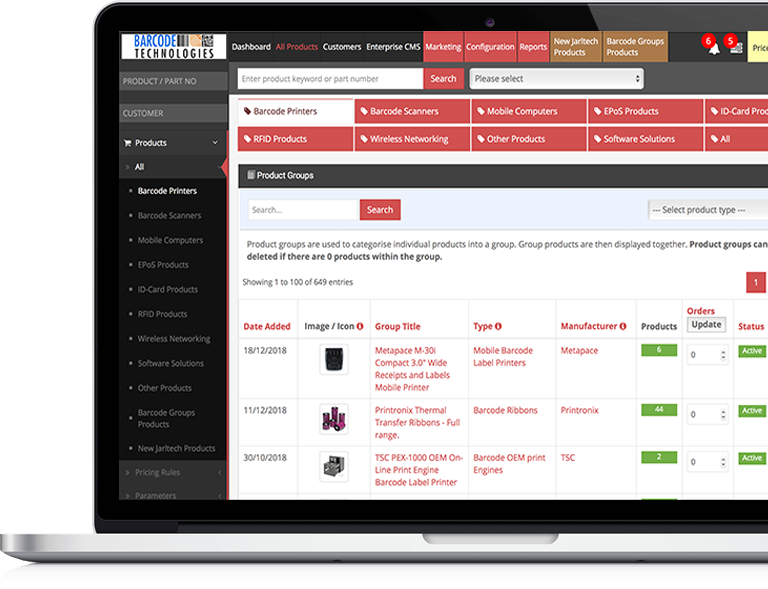Introduction
Laravel, one of the most popular PHP frameworks, is renowned for its elegant syntax and robust capabilities. However, deploying a Laravel application can be a complex task that requires careful planning, precise execution, and often, the expertise of seasoned Laravel developers. This comprehensive guide will walk you through every aspect of Laravel deployment, highlighting why hiring dedicated Laravel programmers can make all the difference.
Understanding Laravel Deployment
Deploying a Laravel application involves moving your application from a local development environment to a live server or cloud platform where it becomes accessible to users. This process encompasses several tasks, including environment configuration, database management, security, and continuous integration and deployment (CI/CD).
The Role of Professional Expertise in Deployment
While it is possible to handle Laravel deployment in-house, the process can be complex and error-prone. Professional Laravel developers bring expertise and experience that can ensure a smooth, secure, and optimized deployment. They understand best practices, the latest tools, and how to avoid common pitfalls, saving time and reducing risks.
Pre-Deployment Preparations
Before deploying a Laravel application, several critical steps must be taken to ensure the application is optimized, secure, and ready for production.
Code Review and Optimization
Analyzing Code Efficiency
Thoroughly reviewing the application’s code is essential to identify any inefficiencies, potential bugs, or performance bottlenecks. This step involves checking for redundant code, ensuring proper use of Laravel’s built-in functionalities, and optimizing queries to minimize database load.
Implementing Best Practices
Applying coding best practices, such as adhering to PSR standards, using Eloquent ORM efficiently, and employing appropriate design patterns, ensures that the application is robust, maintainable, and scalable.
Environment Configuration
Setting Up .env Files
Laravel relies heavily on environment configuration files (.env) to manage settings like database credentials, cache drivers, and application keys. Properly setting up these files is crucial to ensure the application works as expected across different environments (development, staging, production).
Environment-Specific Configurations
Each environment may require unique configurations. For example, development environments might need verbose logging and debugging tools, while production environments should focus on performance optimization and security.
Database Management
Migration and Seeding
Database migrations and seeding are critical steps in Laravel deployment. Migrations allow for consistent schema changes across different environments, while seeding populates the database with initial data. Both are vital for maintaining a consistent state across development, testing, and production.
Choosing the Right Database Solutions
Selecting an appropriate database solution depends on the application’s specific needs, including factors like data volume, read/write requirements, and availability. Professional Laravel developers can help in choosing between options like MySQL, PostgreSQL, or NoSQL databases such as MongoDB.
Why You Should Hire Laravel Programmers for Effective Pre-Deployment
Professional Laravel developers can ensure that all pre-deployment steps are executed effectively, minimizing the risk of issues during the deployment process. Their experience with various environments and configurations enables them to optimize the application for performance, security, and scalability.
Deployment Methods and Strategies
Deploying a Laravel application involves choosing the right hosting environment and deployment strategy.
Traditional vs. Modern Deployment
Comparing Shared Hosting, VPS, and Dedicated Servers
Shared hosting is the most affordable but often comes with limitations in performance and security. Virtual Private Servers (VPS) offer more control and better performance, while dedicated servers provide the highest level of control, performance, and security.
Pros and Cons of Each Method
- Shared Hosting: Low cost, easy setup, but limited resources and control.
- VPS: More control and resources, scalable, but requires server management knowledge.
- Dedicated Servers: Full control, maximum performance, but high cost and requires server management expertise.
Cloud Deployment
Detailed Guide for AWS, Azure, and Google Cloud
Cloud platforms like AWS, Azure, and Google Cloud offer scalable, flexible, and reliable environments for deploying Laravel applications. This section will provide a detailed guide on how to deploy Laravel applications on these platforms, covering steps such as setting up virtual machines, configuring load balancers, and using managed database services.
Leveraging Containerization with Docker and Kubernetes
Containerization with Docker and orchestration with Kubernetes provide a modern approach to deployment, allowing for consistent environments, easy scaling, and simplified management. This section will explain how to create Docker images for Laravel applications and deploy them using Kubernetes.
Continuous Deployment Pipelines
Setting Up CI/CD for Laravel
Continuous Integration/Continuous Deployment (CI/CD) pipelines automate the process of deploying changes to the application, ensuring faster and more reliable deployments. This section will cover setting up CI/CD pipelines using tools like GitHub Actions, GitLab CI, and Jenkins.
Integrating with Platforms like GitHub Actions and GitLab CI
Using platforms like GitHub Actions and GitLab CI can streamline the deployment process, automate testing, and provide feedback. This section will explore how to integrate these tools into your Laravel deployment workflow.
Advantages of Hiring Dedicated Laravel Developers for Deployment Strategy
Hiring dedicated Laravel developers ensures that the deployment strategy is tailored to your application’s needs, leveraging the most appropriate tools and methods for your environment.
Benefits of Expert Deployment
Deploying a Laravel application effectively brings multiple benefits, particularly when managed by experienced developers.
Enhanced Security Measures
Implementing SSL/TLS and Security Headers
Securing a Laravel application begins with implementing SSL/TLS certificates to encrypt data in transit and setting security headers to protect against common attacks like XSS and CSRF.
Regular Security Audits and Penetration Testing
Conducting regular security audits and penetration testing helps identify vulnerabilities before they are exploited. This proactive approach is critical to maintaining a secure application environment.
Performance Optimization
Caching Strategies and Load Balancing
Performance optimization includes implementing caching strategies (e.g., using Redis or Memcached) and setting up load balancing to distribute traffic across multiple servers, enhancing both speed and reliability.
Monitoring and Analyzing Performance Metrics
Continuous monitoring of performance metrics using tools like New Relic or Datadog helps in identifying bottlenecks and optimizing application performance.
Efficient Maintenance and Support
Scheduled Maintenance and Updates
Regular updates and maintenance are vital to ensure that the Laravel application remains secure and up-to-date with the latest features and patches.
Handling Unexpected Downtime and Issues
Experienced Laravel developers are adept at handling unexpected downtime and issues, ensuring quick resolutions to minimize impact on users.
Why Hiring Laravel Developers Can Enhance Your Deployment
Expert developers bring knowledge and experience that can preemptively address many deployment challenges, resulting in smoother operations and fewer issues in production.
Troubleshooting Common Deployment Issues
Despite best efforts, deployment can still encounter problems. Here are some common issues and how to resolve them.
Dependency Management
Resolving Version Conflicts and Dependency Errors
Laravel applications often rely on multiple packages, which can lead to version conflicts or dependency errors. Proper version management and use of tools like Composer can help resolve these conflicts.
Configuration Challenges
Debugging Configuration Files and Environment Variables
Issues with configuration files or environment variables can prevent the application from running correctly. This section provides tips for debugging these files and ensuring they are correctly set up.
Scalability Concerns
Techniques for Scaling Your Laravel Application
Scaling a Laravel application involves managing increased traffic and data loads. Techniques include optimizing database queries, implementing caching, and using horizontal scaling methods like adding more servers.
Hiring Laravel Developers for Effective Troubleshooting
Hiring expert developers ensures quick identification and resolution of issues, minimizing downtime and maintaining a positive user experience.
Best Practices for Laravel App Deployment
Following best practices ensures a smooth and efficient deployment process.
Version Control Integration
Utilizing Git for Deployment
Integrating Git with deployment processes ensures that code changes are tracked and can be rolled back if needed, providing a reliable method for managing updates.
Automated Testing Frameworks
Setting Up and Running Automated Tests
Automated testing helps ensure that new changes do not introduce bugs. This section covers setting up automated tests using PHPUnit and other tools.
Backup and Disaster Recovery Plans
Creating Reliable Backup Strategies
A comprehensive backup strategy is crucial to ensure data recovery in the event of a disaster. This section explains how to set up automated backups and secure them.
Implementing Disaster Recovery Protocols
Disaster recovery protocols ensure that the application can be quickly restored in case of an outage or data loss. This section provides a step-by-step guide to creating and testing these protocols.
Case Studies and Real-World Examples
Learning from real-world experiences can provide valuable insights into effective Laravel deployment.
Successful Laravel Deployments
Case Studies of Well-Executed Deployments
This section presents case studies of successful Laravel deployments, highlighting key strategies and lessons learned.
Lessons Learned from Deployment Failures
Examining failures can provide valuable lessons on what not to do. This section covers common pitfalls and how to avoid them.
Common Pitfalls and How to Avoid Them
Identifying and understanding common deployment pitfalls, such as poor configuration management or inadequate testing, can help prevent them.
Conclusion
Laravel deployment is a multifaceted process that benefits greatly from professional expertise. Key steps include thorough preparation, choosing the right deployment strategy, optimising for performance and security, and maintaining an effective CI/CD pipeline.
The Impact of Professional Expertise on Deployment Success
Hire dedicated Laravel developers can significantly enhance deployment success by leveraging their experience, skills, and familiarity with best practices.
Final Recommendations for Hiring Laravel Experts
To ensure a smooth, secure, and efficient deployment, consider hiring professional Laravel developers who can provide the expertise needed to avoid common pitfalls and optimize performance.
Additional Resources
- Tools and Platforms for Laravel Deployment: Explore tools like Forge, Envoyer, and Laravel Vapor, which can simplify and streamline the deployment process for Laravel applications.
- Recommended Laravel Development Agencies: Consider partnering with agencies specializing in Laravel development to leverage their expertise and resources.
- Further Reading and Tutorials: Dive into Laravel documentation, community forums, and online tutorials to deepen your understanding and stay updated with the latest best practices and features.
FAQ
What is the best way to deploy a Laravel app?
Different methods like shared hosting, VPS, and cloud solutions each have pros and cons. The best choice depends on your specific needs, including factors like budget, control, performance, and scalability.
How can hiring dedicated Laravel developers improve deployment?
Professional developers bring expertise, experience, and familiarity with best practices, ensuring a smoother and more efficient deployment process. They can handle complex configurations, optimize performance, and address issues quickly.
What are common challenges faced during Laravel app deployment?
Common challenges include dependency management, configuration issues, and scalability concerns. These can be mitigated with proper planning, using appropriate tools, and having the right expertise.
How do I choose between shared hosting, VPS, and cloud solutions for Laravel?
Consider factors such as your budget, required control, performance needs, and scalability when choosing a hosting option. Shared hosting is affordable but limited, VPS offers a balance of control and cost, while cloud solutions provide the most flexibility and scalability.
What role does continuous integration and continuous deployment (CI/CD) play in Laravel deployment?
CI/CD automates the deployment process, reducing human error and speeding up the release of new features and updates. It ensures that changes are tested, integrated, and deployed consistently and reliably.




